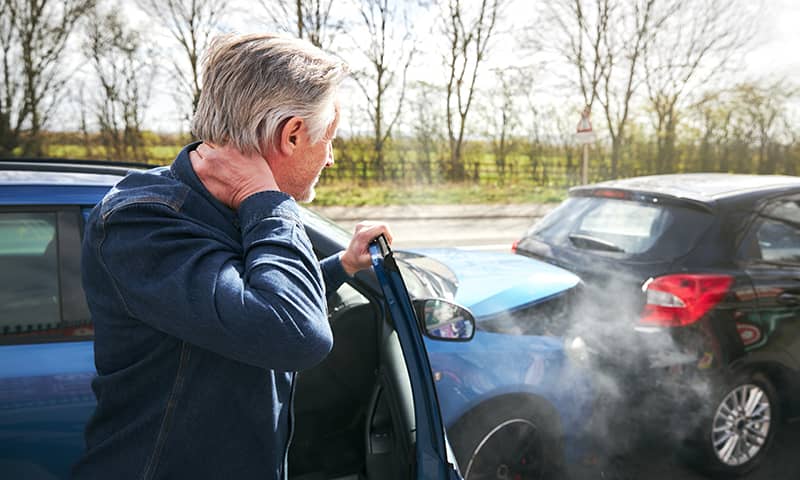
What Happens When a Car Accident Claim Exceeds Policy Limits in WV?
Insurance exists to cover the high costs associated with car accidents and bodily injury. But what happens when the at-fault party doesn’t have enough insurance to pay for the harm they caused? Will the victim be left out to dry? Here, we will discuss your pathways for additional compensation, the nature of policy limits, liability rules, and more.
If you’ve been injured in a car accident for which you’re not at fault, you need a skilled legal team on your side. Whether you are looking for a car accident attorney in Charleston or an injury attorney in Parkersburg, Clarksburg, or elsewhere in West Virginia, call Miley Legal. We are here to help.
What are the Policy Limits in West Virginia?
Every car insurance policy has a cap—known as the policy limit—on how much it will pay for damages after an accident. West Virginia has the following liability insurance minimums:
- $25,000 for bodily injury per person
- $50,000 for bodily injury per accident
- $25,000 for property damage
These limits may cover routine accidents, but if severe injuries or multiple vehicles are involved, they may not be enough. For more information about WV policy limits, read here.
What Happens When Damages Go Beyond Policy Limits?
The at-fault driver’s insurance is the first stop. But when that’s not enough, you have these options.
Underinsured Motorist Coverage
If you carry underinsured motorist (UIM) coverage on your policy, it can step in when the at-fault driver’s insurance is insufficient to cover your losses. According to West Virginia Code §33-6-31e, you must notify your insurer when accepting a settlement that maxes out the at-fault driver’s policy. This will allow you to collect underinsured benefits without waiving your insurer’s rights against the responsible driver.
You should know that UIM coverage is not mandatory in West Virginia, but we highly recommend you purchase that additional layer of coverage to protect yourself from others who injure you that may not be carrying enough insurance to pay for the damage they caused you.
Filing a Lawsuit Against the At-Fault Driver
When the at fault driver doesn have enough insurance coverage to pay for the harm they caused to you and, there isn’t enough underinsurance coverage to pay for the damage, we can file a lawsuit on your behalf against the at fault driver in hopes of recovering from their assets, such as bank accounts, real estate, or other assets that could cover your expenses. This process is lengthy, but our skilled attorneys at Miley Legal will fight on your behalf to recover what you deserve.
How Do These Situations Play Out in Real Life?
Here are three hypothetical scenarios involving insufficient insurance coverage. They are simply for the sake of example but, remember, in the real world every situation is unique.
A Hypothetical Multi-Vehicle Pileup on I-64
John loses control of his Tahoe and causes a multi-vehicle accident on Interstate 64. This results in injuries to three people. He carries the state minimum liability coverage of $50,000 per accident, but the medical expenses for all three victims total $100,000.
In this situation, the $50,000 policy limit is divided among the victims, but that obviously leaves the victims in a financial hole. The injured parties will then file claims through their own underinsured motorist coverage to recover the remaining amounts. If they do not carry underinsured motorist coverage, they will have the option to sue John – but uninsured drivers rarely have the means to pay, even if ruled at fault.
High Medical Bills After a T-Bone Collision
Sarah was driving through an intersection in downtown Huntington, when another driver blew through a red light and t-boned her vehicle. Unfortunately, she suffers a significant spinal injury. Her medical expenses alone reach $75,000, but the at-fault driver only carries $25,000 in bodily injury coverage. Sarah’s attorney then notifies her insurance company, and they pay the difference from her underinsured motorist policy. If that’s not enough, she may need to sue the at-fault driver for additional losses.
Sometimes a Lawsuit is Necessary
When insurance doesn’t fully cover your losses even after negotiation, a lawsuit may be the only remaining avenue. You will need to consult with an experienced attorney to decide if there is a reasonable case to be made, what documentation and evidence you have working for you, and whether or not the time frame and effort is justified. But, at the end of the process, you may be able to win a judgment against the at-fault party.
If you have been injured in a vehicle accident, call the West Virginia personal injury lawyers at Miley Legal. We will be happy to listen to the facts regarding your case and make recommendations on your next course of action.

